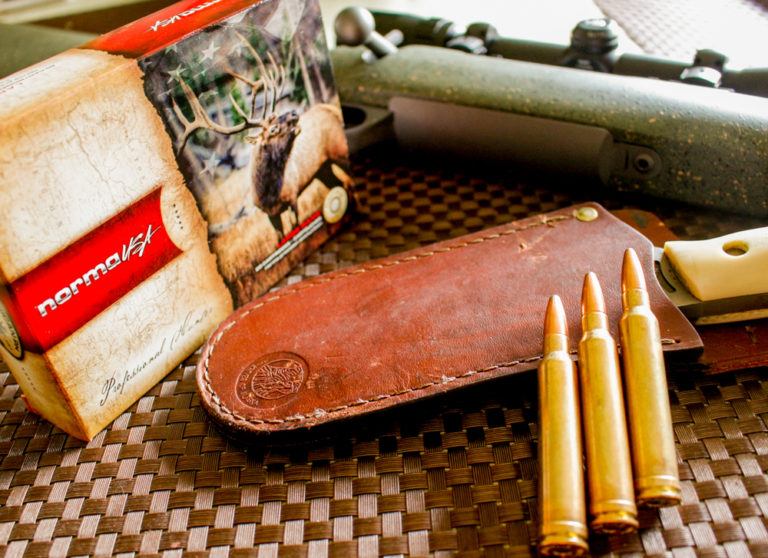
The .300 Win. Mag. is well-suited for hunting 95 percent of the world’s game. Phil Massaro explains why.
- The .300 Win. Mag is based on the .375 H&H case, as are the .458, .338 and .264.
- The cartridge is designed to fit a long action and is ballistically close to the .300 H&H.
- Eminently versatile, the .300 Winchester Magnum is a true long-range cartridge that hits hard, yet is still manageable in the recoil department.
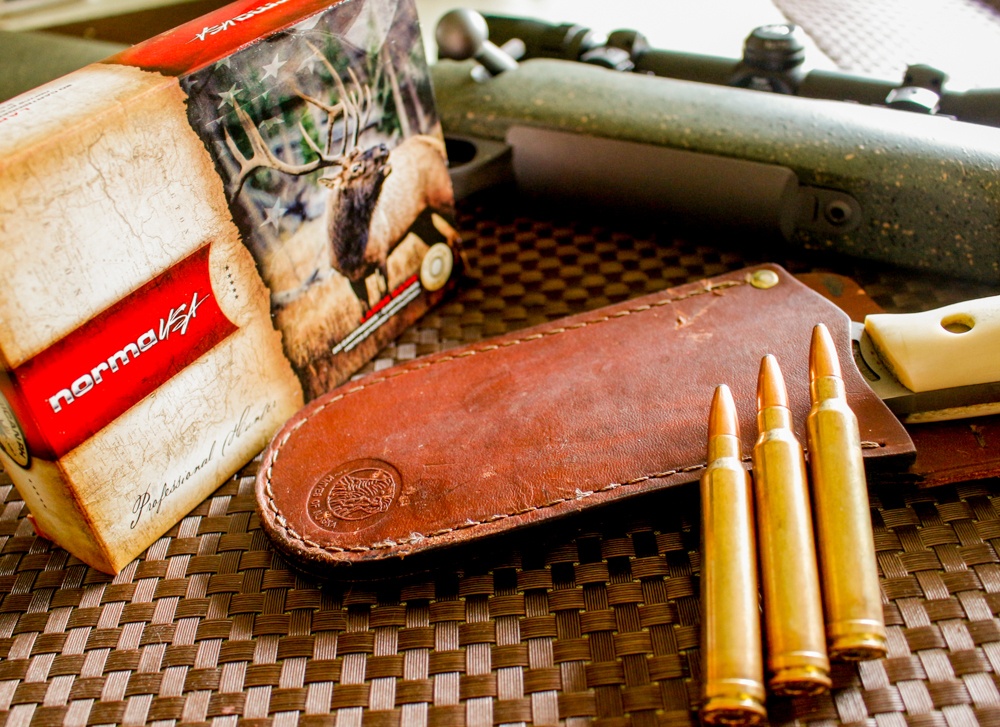
Brought to us in 1963, the .300 Win. Mag. was the fourth cartridge in a series of belted magnums designed to fit in a standard long (.30-’06 length) action. The .458, .338 and .264 were based on the same case — the .375 H&H Mag. — and shared the same shortened case length — 2.500 inch — to maintain a cartridge overall length of 3.340 inch. When Winchester announced the .300 Win. Mag., almost everyone expected the cartridge to be the .338 necked down to hold .308-inch bullets; essentially the .30-338 or very close to the .308 Norma Mag.
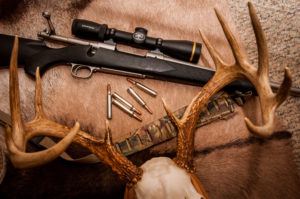
What they saw was a different design. The COL of 3.340 inch was held, but the case was elongated to 2.620 inch, and the neck length shortened to 0.264 inch. The result was a belted cartridge that fits in a long-action rifle and is the ballistic equivalent of the venerable .300 H&H, which requires the longer, magnum-length receiver.
It was less, in length and velocity, than the .300 Weatherby Mag., yet it was enough. The initial loading bettered the velocities of the cornerstone American cartridge, the .30-’06 Springfield, by 250 fps or so, giving a decided advantage in kinetic energy values as well.
The many fantastic choices among the already existing and field-proven .30-caliber bullets made for a versatile cartridge. Winchester used the same 25-degree shoulder for the .300 Win. that it used for the .338 and .264, but the added case capacity gave the Winchester cartridge an advantage over the Norma and the .30/338 wildcat. The resulting case holds 81 to 85 grains of water, depending on brand, when filled to the base of the neck.
Detractors immediately criticized the short neck, as it’s generally preferable to have a bottleneck cartridge use a neck dimension of at least one caliber in length. It had no negative effect. I have found there’s plenty of neck tension to keep things in place, even with the longest bullets, and among the myriad rifle cartridges I’ve loaded, the .300 Win. Mag., is among the most accurate.
Not unlike the .222 Rem. and .308 Win., there is something inherently accurate about the design of the .300 Win. — something lovers of ballistics cannot explain scientifically. To use the vernacular, the .300 Winnie just shoots.
Unlike the .308 Win., which will perform just fine in a rifle sporting a 20-inch barrel, the .300 Win. works best with a barrel of at least 24 inches to fully use the powder capacity of the case. I have two .300s. My Legendary Arms Works Professional has a 24-inch barrel, and my Winchester Model 70 Classic Stainless sports a 26-inch pipe. Neither rifle has ever been a handicap to me while hunting, regardless of how close the shots were or how thick the flora.
As they’re hunting rifles I use across the world, I’ve tried to set them up with riflescopes that can handle a variety of situations, from the prairie of Wyoming, to the tioga of Quebec to black bear in the inky hemlock and spruce thickets of the Catskill and Adirondack mountains of New York.
The Model 70 wears a Leupold VX-6 2-12×44 with a 30mm tube, which can focus up close to shoot a bear trying to dine on your lower extremities to caribou or elk at the edge of my self-imposed hunting limits. The Professional wears a Bushnell Elite 4500 2.5-10×40, a trim, bright piece of glass that’s lighter than most and matches the rifle well. Both of these riflescopes are reminiscent of the .300 Win.; capable of getting the job done no matter the range.
Much like the iconic .30-’06 Springfield, the .300 Win. is well-suited for hunting 95 percent of the world’s game. This is, in fact, partly because of the fabulous selection of .30-caliber bullets we have today. Although the recoil is rather severe to make it a good choice for varmint work, I’ve loaded some 125-grain Nosler Ballistic Tips that have printed rather impressive groups, cruising along at a muzzle velocity of 3,400 fps. Let’s just say the varmints didn’t stand a chance.
As a big-game round, however, the .300 Win. shines. From deer and hogs, to distant pronghorn antelope, to moose and elk, and the ungulates of Africa, I really like the .300 Win. as an all-around choice. The bullet choices for big game, with a handful of exceptions, run from 150 to 220 grains, and man, there are some wonderful choices.
I have used many of them in various applications. For most of my hunting with a .300 Winnie, I have found the 180-grain slugs give the best balance of trajectory, energy and accuracy. The lighter bullet choices will work, if of stout construction and if velocities are allowed to slow down a bit.
Whitetails hit with a standard cup-and-core 150-grain bullet at less than 100 yards from full-house .300 Win. ammunition have an exorbitant amount of blood-shot meat, and penetration can be poor because of violent expansion, brought on by impact velocities greater than 3,200 fps.
The standard 165-grain bullets are a bit better and are a perfect choice if you use a premium bullet. Heavyweight projectiles — 200- and 220-grain bullets — are good choices for the largest deer and antelope you would hunt with a .30-caliber, as well as for the bears and other game that can even the score in a hurry.
Most ammunition companies offer a few hunting loads in .300 Win. Mag., and many are very well constructed. The Federal Premium load featuring the 180-grain Trophy Copper Tipped bullet has provided more than satisfactory results from my rifles, and the solid copper construction ensures that premature bullet break-up is no issue.
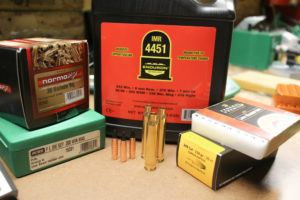
ABM ammo makes a great long-range .300 Win. load built around the Berger 185-grain, which leaves the barrel at 3,080 fps and still delivers 2,365 foot-pounds of energy at 400 yards. The .300 Win. has attained the status most rifle calibers dream of: You can find ammunition, of one variety or another, in most back-country gun shops and almost all the box stores that sell ammunition and hunting supplies. It has become that universal.
But, in my opinion, handloading lets you see the true genius of the .300 Win. Mag. design as a hunting cartridge. I’ve received many comments and questions to this effect: “Why would I choose to use the magnum cartridge when there are so many fantastic rifles available in .308 Win. and .30-’06? What is the advantage, when so many of hunting shots are inside 200 yards?” My answer is: First, I shoot my .300 Wins. very well.
They are good rifles; accurate and well-fitted, and that’s very important. Second, I can, via handloading, create ammunition for my .300 Win. that will mimic the performance of the .308 Win. and/or .30-’06, but I can’t get my .308s and ‘06s to give me .300 Win. performance. When I’m on a hunt in unfamiliar territory, where I have the possibility of multiple species and/or distant shots, I’m much happier carrying a .300 and taking a close shot rather than one of the slower cartridges.
Through the years, I’ve developed a collection of pet loads that have given me reliable field performance on two continents and in many hunting situations. The .300 Win. Mag. is best served by a large rifle magnum primer. For most of my loads, I prefer Federal’s Gold Medal Match GM215M. The hotter spark gives a more uniform result, and the deviation of velocities tends to be very low.
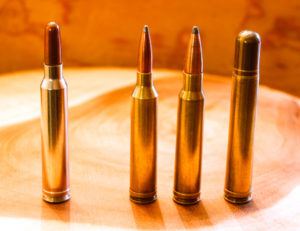
The .300 Win. can be fueled by powders that range from the medium burning IMR4064 and Hodgdon’s VARGET to the slowest burning powders, such as IMR7828 and 7977 to Alliant’s Reloder 25. I like Norma brass and Federal GM215M primers to spark the large powder charges. For an all-around big-game load, I like two bullets: the 180-grain Sierra Game King for a standard bullet and the 180-grain Swift Scirocco II for a bonded-core choice. Both are boat-tail spitzer bullets, the Sierra being a standard cup-and-core, and the Swift a thick jacket, bonded-core polymer-tip design.
The Sierra accounted for my first caribou, taken across a frozen lake in Quebec at minus 15, and the Scirocco accounted for my best pronghorn, taken in Wyoming at the end of September, when the country there is as pretty as any place I’ve seen. Both loads have accompanied me on many local deer hunts in my native New York, and they have worked just fine.
These bullets like the same powder charges. I go back and forth between 68.5 grains of IMR453 and 73.0 grains of Alliant’s Reloder-19, as both have given me three-shot groups of less than ½ MOA, and both produce a velocity of about 2,960 fps, depending on the rifle and temperature. Although these bullets are rather long, there’s no problem seating them in the .300 Win. case and maintaining the SAAMI specified COL.
For my first African safari, I packed a .300 Win. as my light rifle, nicely complementing my .375 H&H Mag. Because kudu and eland were on the shopping list, I wanted a bullet that would not only deliver a decent trajectory but be strong enough to deliver the bone-smashing power that an antelope weighing almost a ton can demand.
I chose the 200-grain Swift A-Frame for this hunt, fueled by 75.0 grains of the slow-burning Reloder-25, for a muzzle velocity of 2,710 fps. This load, which printed 1-inch groups at 100 yards, accounted for my first head of African game: a heavy-horned gemsbok bull that holds a place of honor among my hunting trophies.
That combination, with that strong A-Frame bullet, which retains more than 90 percent of its weight, would easily handle interior grizzly bear and just about any creature shy of cape buffalo and elephant.
New York has a healthy population of black bears, which, although not particularly tough in comparison to grizzlies, can attain weights of 600 pounds or more. When an animal has claws and teeth that can rearrange your anatomy, I prefer to carry a rifle that ends an argument quickly.
I was reading some classic hunting literature in which the author waxed poetically about the virtues of the .30-’06 Springfield and the classic 220-grain round-nose load at 2,400 fps. I figured I could get the .300, with a bit of creative handloading, to perform the same.
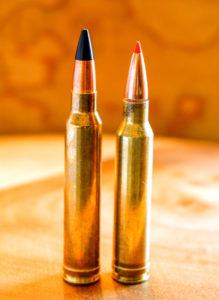
It didn’t take long to obtain a box of good Hornady Interlocks and some old data from an aged reloading manual. I used 53.0 grains of IMR 4064 to achieve a muzzle velocity of 2,425 fps; perfect for whitetail and black bears. That load prints at 1 MOA, and has accounted for a New York black bear and my best local whitetail: an 11-point buck that proudly resides on the wall of my dining room.
The kudu bull I mentioned earlier was taken with a special load, built around the 150-grain Cutting Edge Bullets Copper Raptor bullet. The Raptor is a monometal hollow-point with a polymer tip. Upon impact, the skived walls of the hollow-point section break off into small blades for serious impact trauma, and the rear portion of the bullet remains at caliber dimension for deep penetration.
I know, a 150-grain seems awfully light for an animal the size of a kudu, which are often comparable to elk, but my previous experiences with these bullets engendered a bunch of confidence, and my theory that they would handle kudu and the like was proven correct. That bull dropped in his tracks.
That load also accounted for a big waterbuck bull at 215 yards a couple of days later. I used the new Enduron line of powder — IMR 4451 — to arrive at ¾ MOA accuracy and a muzzle velocity of 3,340 fps. According to Chris Hodgdon, president of the Hodgdon Powder Co., which now produces the IMR line, that marked the first use of IMR4451 in Africa. The only bullet base I recovered was from the kudu bull. All the other shots passed through, at ranges from 70 to 215 yards. All in all, it proved to be a thoroughly dependable load with very little recoil.
Among the hunting rounds, there are more powerful .30s on the market. The .300 Weatherby Mag., .300 Rem. Ultra Mag. and the behemoth .30-378 Weatherby will produce higher muzzle velocities and flatter trajectories than the .300 Win., yet that comes at the price of a considerable increase in recoil and barrel wear.
As an example, my dad’s favorite .30-caliber magnum is the .300 RUM, which will drive a 180-grain slug at faster than 3,350 fps but requires just shy of 100 grains of slow-burning powder to do so. My .300 Win. will push the same bullet at 3,050 fps but with fewer than 80 grains of powder, with much more comfortable and manageable recoil. Let’s also compare the trajectory of the two.
Using a 200-yard zero and the same 180-grain projectile, the .300 Win. will be 6 inches low at 300 yards and 18 inches low at 400 yards. The .300 RUM will be just less than 4 inches low at 300 yards and 12 inches low at 400. Although the RUM has an appreciable difference in long-range trajectory, the added case length, longer receiver and significant increase in recoil of the .300 RUM give the edge to the .300 Win., in my opinion.

Based on my shooting experiences, off the bench doing load development and in real-world hunting situations, I feel comfortable saying the .300 Win. has a power level the average shooter can accurately shoot without beginning to think about a muzzle brake. Everyone has a different level of recoil tolerance, but I know many shooters who insist on using a .300 Weatherby or bigger caliber and develop a nasty flinch, resulting in poor targets and wounded game.
No matter how big the case is, a .30-caliber bullet placed improperly will not kill game. I believe that among the choices for magnum cartridges, the .300 Win. Mag. (and its ballistic twin, the .300 H&H Mag.) makes the most logical and practical choice for sportsmen.
The .300 Win. is not only a hunting cartridge, though. It’s comfortable on the bench-rest circuit and has been adopted by the U.S. Marine Corps in sniper rifles. Paper-punchers can find many wonderful match-grade bullets that will print tiny cloverleaf groups.
With a 1:10-inch twist rate, the .300 Win. has the horsepower to push the heaviest target bullets, such as the 230-grain Berger Match Hybrid Target, at muzzle velocity of faster than 2,800 fps. With a G1 ballistic coefficient of 0.717, this combination offers the long-range target shooter all sorts of wind resistance — perfect for the 1,000-yard range.
The 168 and 180-grain Sierra Match Kings will also make fantastic choices for accurate target work. Although the recoil of a .300 Win. can be a bit much for extended shooting sessions, in a rifle with sufficient weight, it can be more than tolerable.
When it comes to the actual construction of the case, the belt is unnecessary. Unlike the .375 H&H, .300 H&H and .458 Win., the .300 headspaces off that well-pronounced shoulder. Those other cartridges can exhibit long-term case stretching just in front of the belt, but this effect seems to be minimized in the .300 Win.
The case feeds just fine, unlike some of the feeding issues associated with the Winchester Short Magnum series, and because it shares the same action length as the .30-’06, it’s quite easy to convert a rifle of .30-’06 length action to the .300 Win. Mag. Among the .30-caliber magnums, the .300 H&H owns the nostalgia category, and the .300 RUM wears the horsepower crown among commonly produced rifles, but you can take my word for it: The .300 Win. will hold its title of King Versatile for generations.

How does a .300 Win. compare to other calibers with a similar case capacity? Is it anemic when compared to the .338 Win. Mag.? Does the 7mm Rem. Mag. make a mockery of the .300 in the trajectory department? The answer to both questions is an emphatic no. The difference between the 7mm Rem. Mag. and the .300 is so slight that I believe the larger frontal diameter of the .300 — as well as the better selection of bullet weights — gives a definite edge to the .300 Win.
Although the .338 has an even larger diameter, the recoil begins to ramp up significantly. Even though the .338 can use bullets weighing 165 to 250 grains, the .300 can use bullets from 100 to 250 grains. Yes, that’s right; a 250-grain .30-caliber bullet. The 250-grain Barnes Original, which looks about as long as a golf pencil, will attain velocities of 2,500 fps — only 150 fps behind the .338 with the same bullet weight — and group rather accurately. Grab some Cutting Edge Bullets 100-grain Raptors for your .300 Win., and you’ve got as fine a coyote-killing machine as was ever invented.
There have been several cartridges that tried to usurp the .30-caliber magnum crown — such as the .300 Win. Short Mag. — but the .300 Win. still reigns supreme. The blend of flat trajectory, striking power and manageable recoil will ensure its position at the top of the heap.
Will it ever replace the king of all cartridges, the .30-’06 Springfield? Probably not. But although I’ve had some great hunting and shooting experiences with the ought-six, to me the .300 Win. represents a cartridge that delivers just a bit more, and although some folks reading this might deem that velocity advantage unnecessary, for me it engenders confidence in the rifle. I firmly believe that confidence is a huge part of good marksmanship.
Editor’s Note: This excerpt is from Cartridges of the World, 15th Edition.

Next Step: Get your FREE Printable Target Pack
Enhance your shooting precision with our 62 MOA Targets, perfect for rifles and handguns. Crafted in collaboration with Storm Tactical for accuracy and versatility.
Subscribe to the Gun Digest email newsletter and get your downloadable target pack sent straight to your inbox. Stay updated with the latest firearms info in the industry.

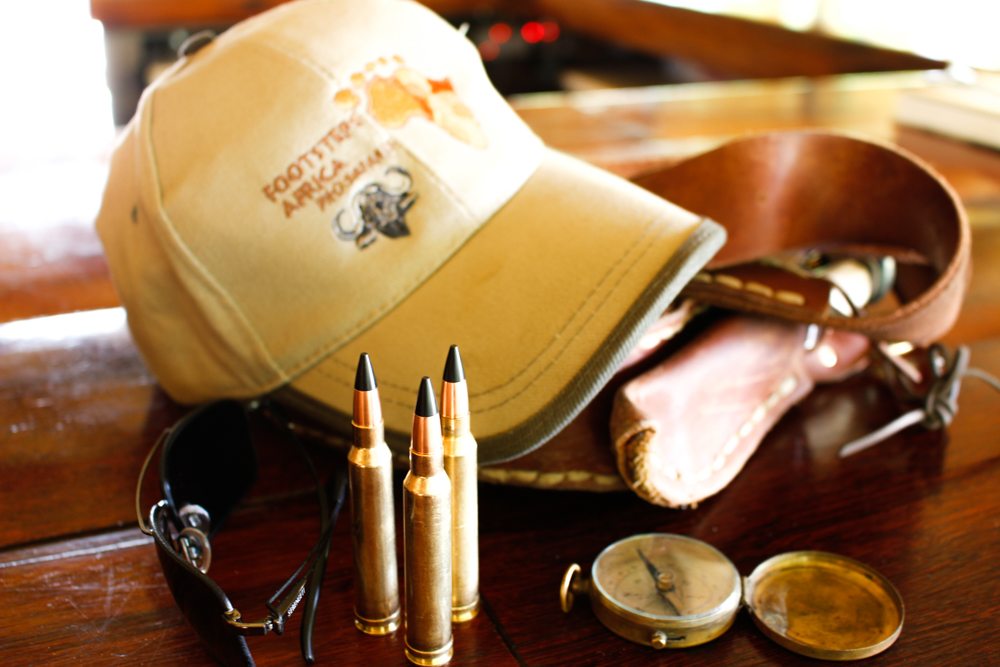
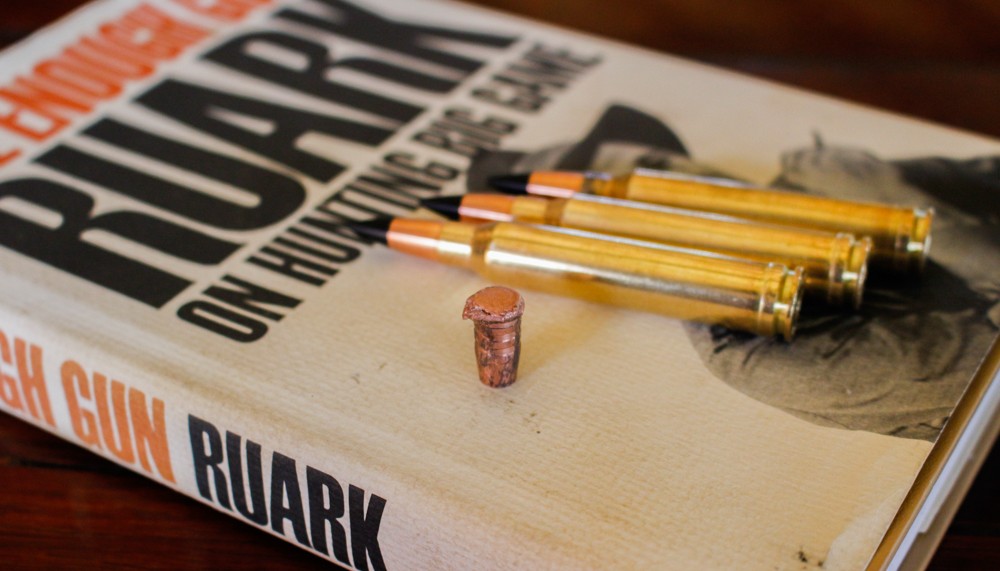
![Best Concealed Carry Guns In 2025 [Field Tested] Wilson Combat EDC X9S 1](https://gundigest.com/wp-content/uploads/Wilson-Combat-EDC-X9S-1-324x160.jpg)


![Best 9mm Carbine: Affordable PCCs [Tested] Ruger Carbine Shooting](https://gundigest.com/wp-content/uploads/Ruger-Carbine-Shooting-100x70.jpg)
![Best AR-15: Top Options Available Today [Field Tested] Harrington and Richardson PSA XM177E2 feature](https://gundigest.com/wp-content/uploads/Harrington-and-Richardson-PSA-XM177E2-feature-100x70.jpg)

I was a competitive shooter in the TXARNG. On one trip to the WPW matches, the NGMTU guys gave me two thousand of a non-catalogued 30-250 MatchKing bullet. I have been holding off trying them in my .300 Win Mag because the reason they were giving the bullets away was because they had trouble stabilizing it in their .300-chambered M24s without loading it dangerously hot. I’ve been thinking about rebarrelling the gun with a 1:8 twist tube.
The US Army developed the 300 Win for its M24 long action Remington 700 based Sniper rifle.
The Marines M40 is a short action Remington 700 308 Win/7.62 NATO Sniper rifle.
The Army developed the 300 Win as a Sniper round.